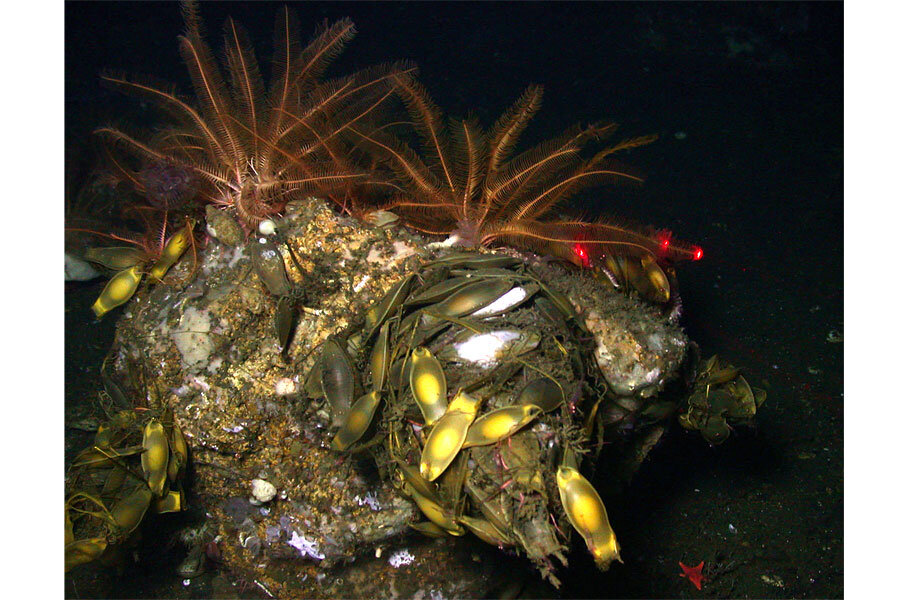In the underwater canyons off Northern California, a new species
Loading...
| San Francisco
Scientists have discovered a new species of deep-sea coral in underwater canyons off the Northern California coast, the National Oceanic and Atmospheric Administration announced.
A NOAA research team using small submersibles found the coral in September near national marine sanctuaries off the coast of Sonoma County, the agency said Wednesday.
The coral from the genus Leptogorgia was discovered about 600 feet deep in the first intensive exploration of underwater canyons near the Gulf of Farallones and Cordell Bank national marine sanctuaries.
Collecting data on the 4-inch-long white and redcoral will help scientists determine the ecological importance of deep sea communities in the area and the threats they face, said the Farallones sanctuary's superintendent, Maria Brown.
"Deep-sea corals and sponges provide valuable refuge for fish and other marina life," Brown said. "Effective management of these ecosystems requires science-based information on their condition."
Before the research expedition two months ago, scientists knew little about the marine life in the area, NOAA said.
After multiple dives in the area, researchers also found a "highly unusual" nursery area for catsharks.
"This is a highly unusual nursery because rarely, if ever, are shark nurseries in the same area as skate nurseries," said Peter Etnoyer, a deep-sea biologist at NOAA's National Centers for Coastal Ocean Science.
Submarine canyons often extend from the continental shelf to the deep sea, and exploring them can be difficult.
The research team that made the discoveries conducted video surveys of areas that had been only documented through sonar imaging.
Copyright 2014 The Associated Press. All rights reserved. This material may not be published, broadcast, rewritten or redistributed.







